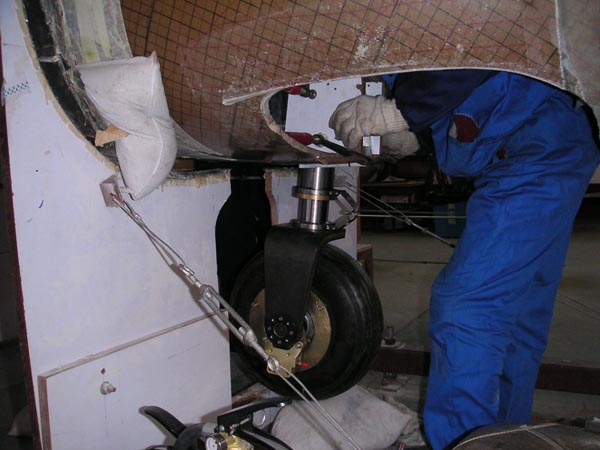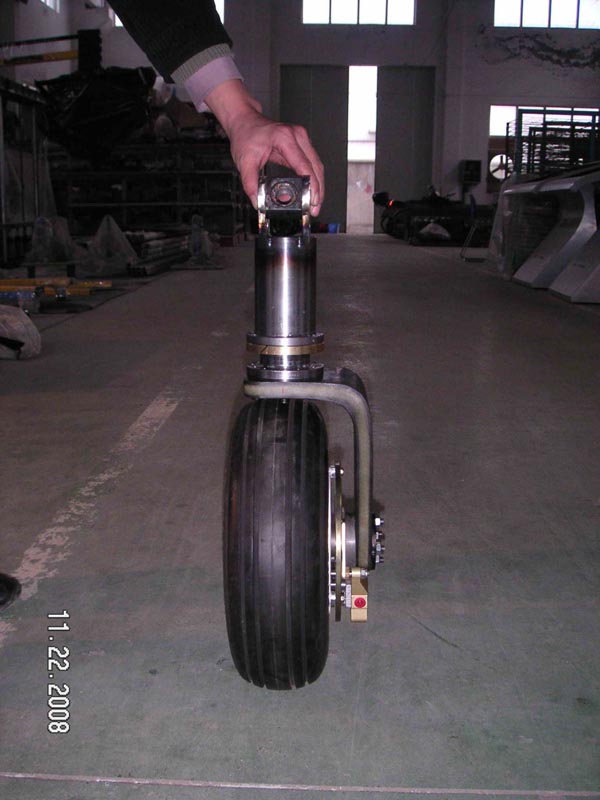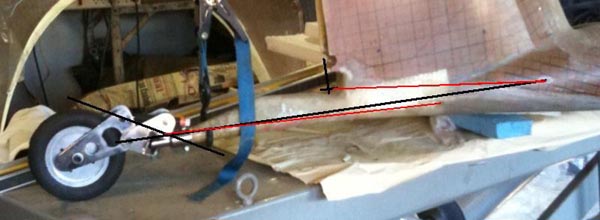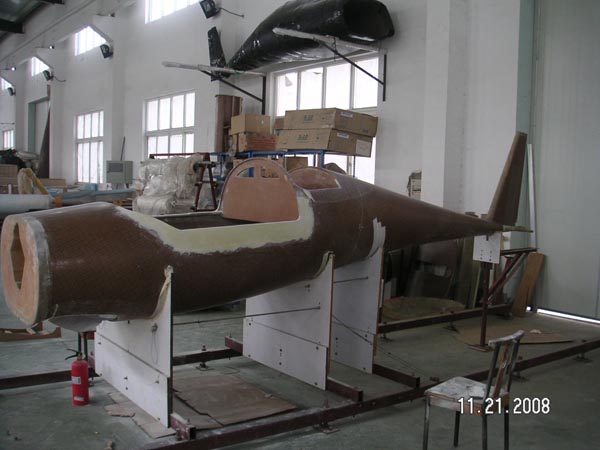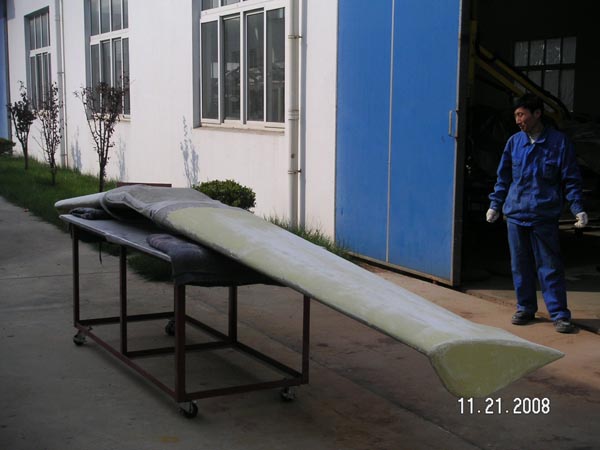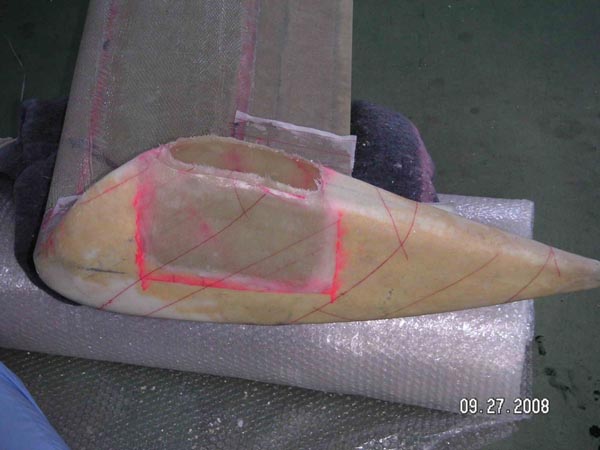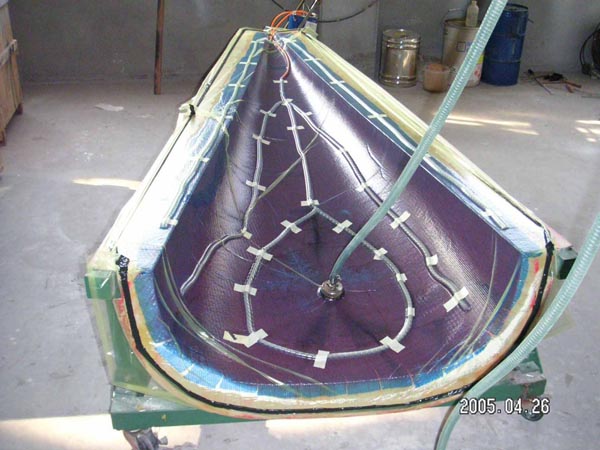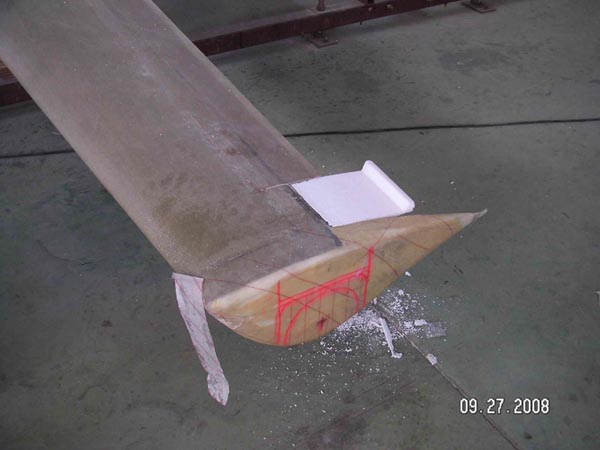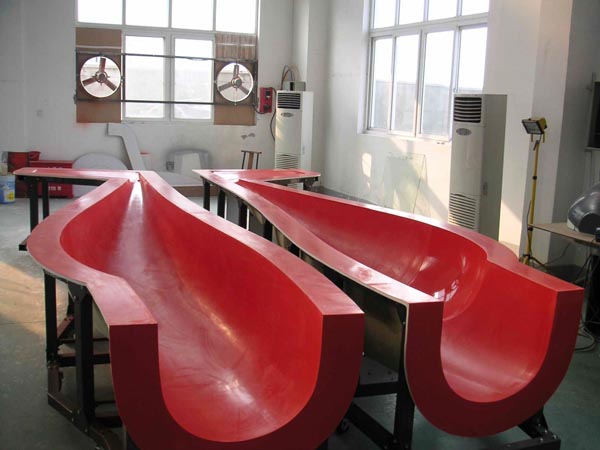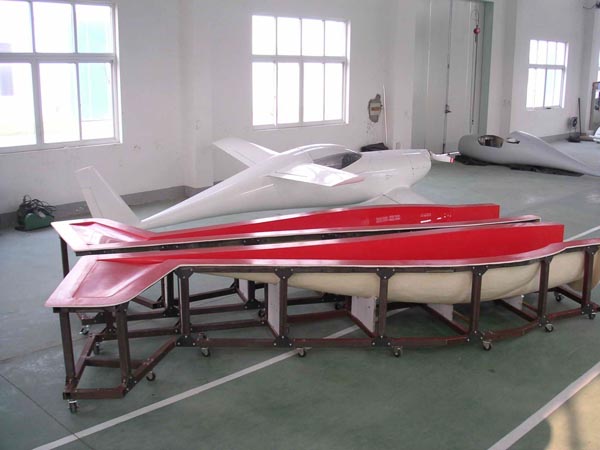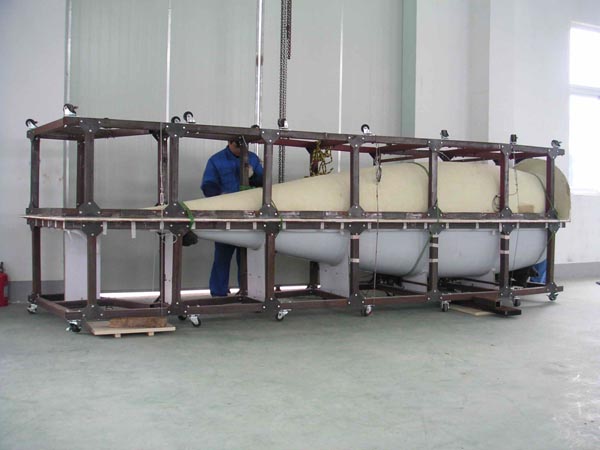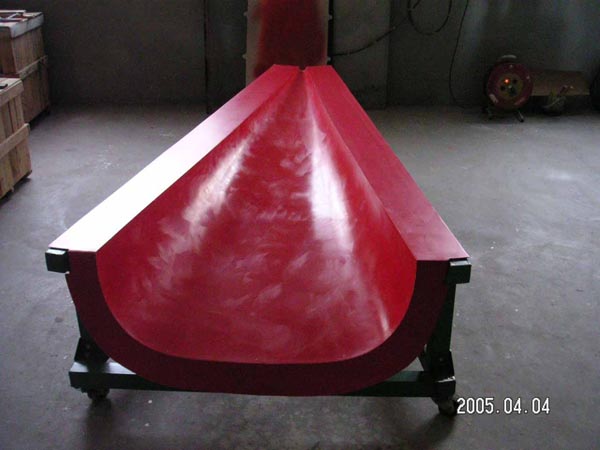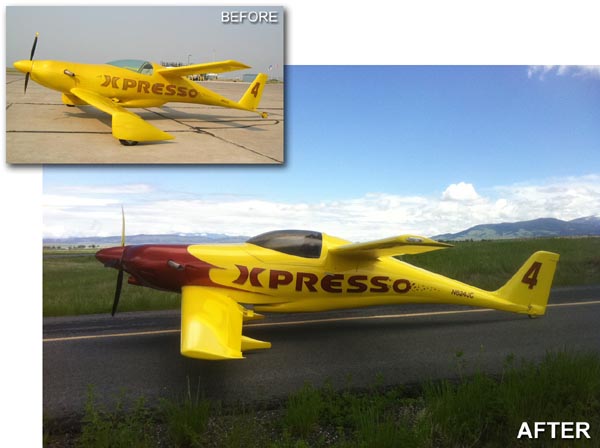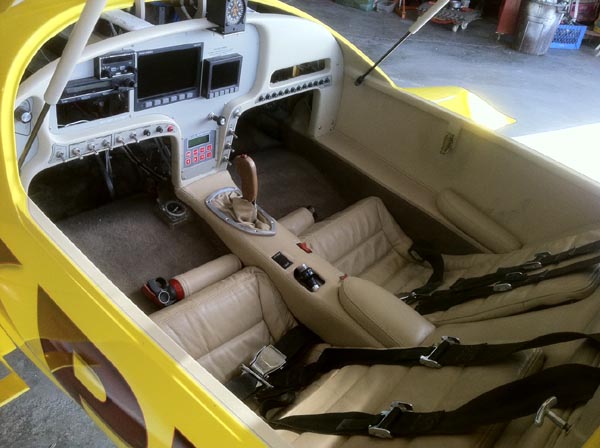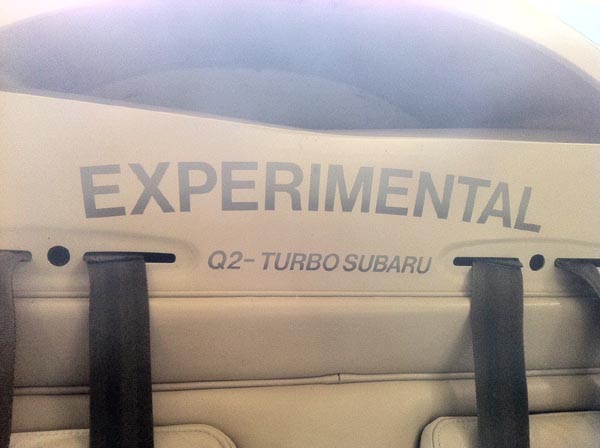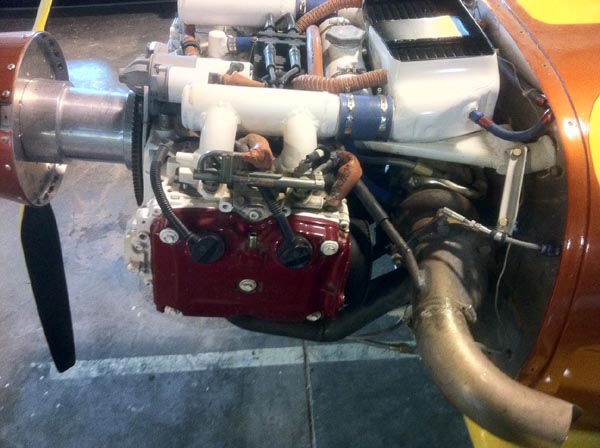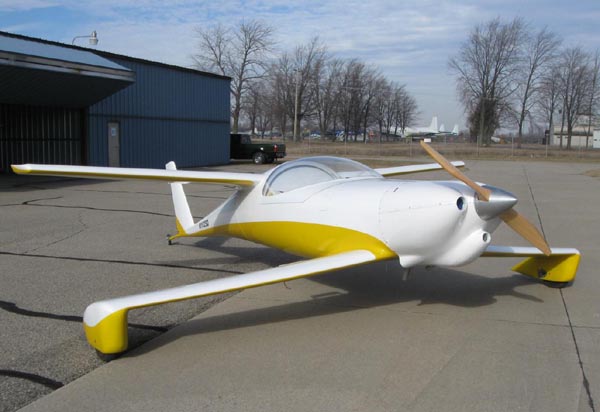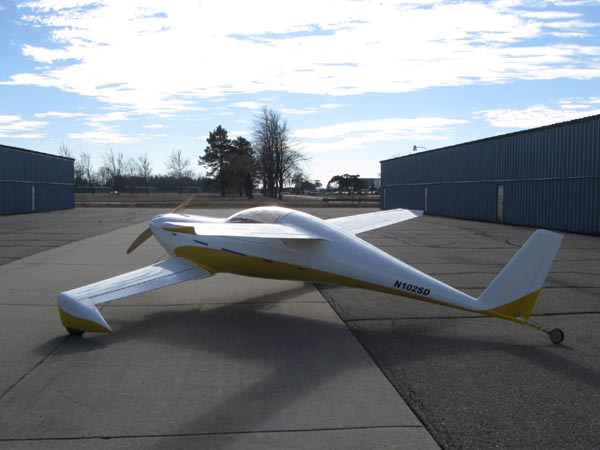- Details
-
Category: Q-Talk Articles
-
Published: Sunday, 31 December 1995 06:11
-
Written by Tom Moore
-
Hits: 3413
Hi Jim,
My move to Minneapolis is complete. I flew the plane out and it performed very well. I saw ground speeds of 150-160 mph across Montana and North Dakota. Ended up taking 9.4 hours tach time - lots of messing around on the ground. Stopped in Jamestown, ND due to a vibration and found an exhaust lifter that had come out of adjustment so I flew around a little there checking things out. I suppose I probably had about 7 - 7.5 hours actual in the air time.
The VW/Q1 performs so much better down here (900 msl opposed to 4000 msl)! I can land on 4000' runways and only use half of the distance - pretty unusual feeling for me. Have not had time to time any climbs or straight and level speeds yet will try to do before winter.
I have found 5 Q2's in the area and none are flown anymore! Makes me sick! Found one I'd like to buy, but don't have any money after buying a house, car and moving! If I had my priorities straight, I'd have a new plane and forget about the other stuff!
Jon Finley, Bloomington, MN
Dear Jim,
My Tri-Q project is proceeding well even to the extent of a possible completion this year - but I have been saying that for the last 3 years!
I am a bit short of time at the moment so I will give a full report later, with some photos that are currently in the camera.
Chris Simpson, West Sussex, England
Hi Jim,
I'm working right now on an Onan engine. The factory classification of the engine is NHC. When talking with the Onan people, they claim that the NHC engine was actually classified as a 25 hp engine.
As I told you, a friend and I went together on a dynamometer. I have just bored the NHC engine, new pistons, rings, bearings, valves and the whole nine. As soon as it's together I plan to play around on the dyno and try to get a little bit more "oomph" out of it. I will keep in touch about this. Right now I have a loose goal of "closer to 30 hp". The Onan is extremely overbuilt with "mega" dimensions so I can't really foresee any reliability problems. It has internal dimensions that is in the range of automobile engines, taking out, on a regular basis, a lot more power on a much higher RPM than the Onan is ever going to see.
Roger Isaksson, Sonora, CA
Tom,
As you can probably see from the enclosed material, I have been having a great deal of "fun" with my Q-200 Science Project. Notable among my problems are (1) an apparent lack of engine power under dynamic conditions which leads me to believe I have an induction problem and (2) some degree of nose down condition in spite of the weight and balance being within the forward mid-range. The lack of engine power was originally blamed on the engine/prop combination and then on the Ellison Throttle Body. I now suspect that the induction forward of the Ellison makes the injector more problematic than it already is. As a result, I'm sucking pond water approximately 40 MPH slower than I should be. The back wing appears to be producing a bit more lift than is appropriate. This is requiring me to use most of the aileron trailing edge up reflex. I'm carrying about 7-8 degrees of down elevator at 150 MPH (TAS) and that is undoubtedly contributing to the trim drag count.
As a result of my difficulties, I have gone and remeasured and gauged what was already a fairly straight airplane. I did, however, discover that I had an extra three to four inches in tip length built into my span which put me over the BL100 cut off called out in the plans. About two weeks ago, I woke up out of a good nights sleep thinking that I wasn't about to see any flying qualities improve leaving things the way they were. I resolved to start off by getting the span back down to where it was supposed to be and put a manifold pressure gauge in the aircraft to help troubleshoot a possible loss of engine power as the aircraft reaches takeoff.
The manifold pressure installation is complete and the new fiberglass/foam main wing tips are in place (the tips still need quite a bit of surface prep work). We will be testing again within about a week.
What is good about the airplane is that I haven't had any bad problems with ground handling. (1) The differential floated brake system (using the Hurst go cart brakes as described in back issues of the QBA newsletters along with (2) the 200 X 50 air filled tailwheel and modified fork assembly (Recommended by Gene Sheehan) is a winning combination. I am not using aileron steering at this time, as I do not have enough time with it to be competent. Suffice to say that if you can fly a tricycle gear airplane, you should be able to fly the Q-200 with the above modifications and a proper ground angle of attack.
My vinyl ester resin lined tanks have been working well with the auto gas, which I have been using. I have, however, encountered a generous amount of cutting debris (FOD) in the in-line filters. This is primarily foam dust and glass shards, which combine to clog filters and appear as a brown sludge when mixed with fuel. The important thing is to continue to change filter elements and cycle as much fuel through the system over-flow as possible in order to clean out the tanks. Contamination in my tanks was not apparent until the aircraft went into the flight attitude (so that the fuel pickup could reach the sludge) and was under high flow rates. My in-line filter to the header tank was completely clogged causing in-flight aborts during my first two flights. Filters are good things. Cleaning and checking filters makes your airplane work good and last a long time.
Q-200 FLIGHT TEST SUMMARYS
FLIGHT 03
Description: Regression flight to evaluate fuel system and evaluate speed performance and landing approach proficiency. This was the second flight with 50 lbs of ballast in the passenger side baggage compartment. The ballast substantially improved handling. Made normal takeoff from runway 30 with climbout speeds of 85-90 MPH. Could not exceed 140 MPH in level flight. Fuel system worked properly with good continuous filling of header tank (first and second flights were aborted early due to a clogged fuel filter down stream of the facet fuel pump). Debris consisted of dark foam/resin slurry, which dried to a light powder after exposure to the air. Doug remarked that I should continue to change this filter every flight through the first 10 hours and that this condition is common even at SCALED COMPOSITE. Made approximately 4 approaches with one bouncing touch and go and a smooth landing to full stop on runway 30. Rough landings are primarily the cause of either misjudging the touchdown altitude and allowing the aircraft to flare high (with a high sink rate) or settling onto the mains with too much energy (leading to a divergent bouncing from mains to tailwheel). Speed control on final is of primary importance. Main tank gauge is still tango uniform (it's registering something ... I'm not sure what). Header tank was full after landing rollout. Brakes are working predictably and with satisfactory stopping power. Still have noise when applying left hand brake. Differential braking is not a problem if used with caution. The big tailwheel is positive ... works good/sticks good. Audio recording of chase video was not successful as it was with flight 2.
FLIGHT 04
Description: Maintenance test flight for primary COM/NAV checkout and pilot landing confidence/proficiency. Normal climbout from runway 30 at Mojave. Sluggish climb was experienced, as has been the case. Engine RPM during takeoff run and climb did not exceed 2300. Maximum rate of climb was 900 FPM at 80-90 MPH and approximately 10 degrees angle of attack as read from artificial horizon. Felt and applied aft stick, effectively balancing takeoff life between front and back wings. This diminished excessive tail up (tail flying first) during takeoff roll. Terminated climb at approximately 7000 ft MSL due to power pulses as noted in flight 2. No large RPM transients or engine missing were noted. Engine temperatures and pressures were nominal and as observed in previous flights. Normal entry to pattern and smooth land. No noted engine anomalies during taxi.
FLIGHT 05
Description: Engineering trouble shooting of engine power in climb and level flight, maintenance test flight no. 2 for NAV checkout, and pilot landing confidence/proficiency. Based upon discussions with Mr. John Sharp, this flight was run for baseline experience on possible Manifold Pressure anomalies. No manifold pressure gauge was mounted during this flight due to lack of available parts. It was believed that the geometry of the carb heat valve on the air box might have been diverting flow and thus reducing manifold pressure during dynamic flight. Flight Test Air Box I (without carb heat provision) was substituted for this test flight. This air box was the first prototype and had been previously used for ground runs only at static conditions. There was no major improvement in maximum throttle RPM. Climb was as observed in previous flights with back stick applied to avert excessive tail up during takeoff run. Climb was initially slow at 400-500 FPM at 95-100 MPH. This was the climb airspeed recommended by Mr. Gene Sheehan. A higher rate of climb was assumed at 900 FPM and 80 MPH. Climb RPM varied from 2200 to 2300 RPM.
Multiple attempts were made at 3000-4000 AGL to pushover slightly and normalize an airspeed condition in level flight by unloading the propeller and then letting it reach equilibrium. This was partially successful with leaning and airspeeds of 151 were observed in straight away runs prior to partial turns with VSI showing little climb or descent indications. With these pushover runs the engine appeared to get into this mode easier and easier, lending weight to the argument that the engine is still in a break-in state and may begin to improve in performance with proper coaxing.
Six approaches were made to runway 08 at Mojave. During these landing attempts there was great difficulty experienced in maintaining the visual glideslope due to thermal effects within the quarter mile final to the runway. In addition, after flight reports indicated a quartering tailwind on approach to the runway (with a shear moving in a different direction at 500 AGL), this not being visible from the traffic pattern altitude on the 08 side of the field. Observed windsocks on the other Mojave locations indicated a normal headwind approach. Two of the approaches ended in bouncing touch and goes. The final third touchdown, landing, was less stable than desired, but understandable considering the quartering tailwind.
On post flight, Mr. Sheehan remarked that the aircraft may need 3 quarters of a degree down incidence on the back wing. He said that it would not effect speed performance and the aircraft could be flown as is, but made the remarks based on the pilots initial impressions of elevator position and reflexor position during the past five test flights. Mr. Sheehan further remarked that I might want to change the incidence of the canard or change the outboard camber of the main wing surfaces in order to reduce the amount of reflex required. This would be done by removing the aft one-third of the outboard surfaces and re-attaching at an increased trailing edge up position (my impression is that this might also be done by shortening the main wing section span). Mr. Sheehan also remarked that there was excessive play on the right hand aileron requiring attention before the next flight.
Brian Martinez, Quartz Hill, CA
(805) 943-5379
Ed. Note: Brian is still testing and sending in the results that will show up in issues to follow.
Greetings Jim,
Looks like I missed a good event at Ottawa last year. I hope to make it this year. I have been trying to spend less time going places and more time building on my project. Got to get this thing done!!
I am still sanding and priming but very pleased with the results of the System III water based primer. It just rolls on and sands very nicely. I have used two gallons so far with most of the front half of the fuselage, all control surfaces, tops of the main wing and canard done. It has taken two months of my "SPARE TIME" which has been about fifty hours but I think that it looks great ... just my humble opinion. I think that this will be fine for the initial flight-testing and paint later when I know that the aircraft flies well.
I also have been using the Superlite Epoxy Filler. It is a little hard to get spread out at times but is not too bad. It cures overnight and sands well. It generally takes a few applications to get all the pinholes filled and cures to a very hard surface.
Well that's about it for now.
Safe flying
Dennis Colomb, Vacaville, CA
Dear Jim:
The article by Joseph Morrison regarding bending his plane inspired me to offer a few unsolicited observations. Obviously things might have worked out better if he had gone to full power and went flying, however, God forbid I should ever second-guess any pilot. I wasn't in his shoes. However, the day before I few my RV-3, which I had built, I called Dick Van and asked if he had any last thoughts prior to first flight. He said that as long as I was satisfied from a few taxi tests that all systems were working and during any high-speed taxi tests the plane decided to go fly, don't even think of aborting. Apply power and go fly.
The next day I was in fact doing medium and faster taxi tests from a turf field and without me planning on doing it, the plane jumped into the air. Because of the earlier conversation, I didn't clutter my mind with making a decision. I didn't even consider an abort. Accordingly, I could concentrate on flying. I felt the bird out for about fifteen minutes then had all the time in the world to concentrate on the landing with plenty of time for a good approach and finished with a GREAT landing. Too many pilots attempt to change every configuration of the plane on a moments notice and attempt a landing with real estate fast running out.
Not to suggest for a moment Joe blew it, but having made a decision first, makes his subsequent actions easier to accommodate.
Walt Halloran, Rochester, MN
Dear Jim,
I am renewing my QBA membership for another year. The newsletter is doing a great job in promoting the safety of flying members and keeping up the spirits of those who are still struggling with building their ultimate machines. I am having some job related challenges, but hopefully all will be ironed out by Oshkosh time. Happy and prosperous new year to Tom and you and many thanks for providing so many years of enlightened guidance and encouragement.
Igor Mokrys, Calgary, Canada
Hi Jim
I separated from the Navy late last summer (even being in the cockpit of an F/A 18 wasn't enough to keep me in, but I still own the Q2) and am establishing a civilian life with no more moving runways on overcast, moonless nights.
Not much to report for the Q2. It sits in a hangar with an expired annual and hasn't been airborne since October 1994. Hopefully next year I can gather all my belongings in one spot after 9 years of military living and make use of those that are worth keeping.
During my last annual flight physical with the military I expected to renew my Class III medical at the same time. The only additional item not performed by the military except every third year was the glaucoma check. They refused to issue a Class III because they had received too much pressure from the local doctors as having taken away some of their business. So let me get this straight, I can give a few blood samples and see a doctor for 10 minutes and be cleared to fly a $35 million F/A 18 wreaking havoc on the world's enemies, but I have to pay a civilian doctor for a second opinion to fly my Q2 on the weekends?
Dave Irwin, Aurora, IL
Dear Jim
I wish I could say that this has been a good year for my aircraft but it hasn't. I finally got it back in the air after extensive damage to the canard then remounting it, engine mount changes and alternator mounting. The plane flew OK, but the canard wasn't producing enough lift so it was either fly around with the ailerons reflexed up, the elevators down or weight in the tail. I decided to put 8-9 pounds on the tail stinger and work out all the other bugs. I added an oil cooler, which consisted of 6 feet of 3/8" aluminum tubing running in the area above the cylinder heads. This dropped the oil temp about 20-25 degrees, from 225 to around 200 degrees. I still could use more cooling. I put a small alternator on the front of the O-200 with a bracket that mounts to the fuel pump pad. You have to drill and tap holes for studs in the case. I built a large pulley that fits between the crankshaft hub and a 6" aluminum extension. The whole setup works great and I haven't had a bit of trouble with it. It puts out gobs of electricity. I also built a swing away engine mount for the O-200. It works great and allows fairly easy access to the back of the engine without using an engine hoist. To get the geometry right I had to move the engine forward 1" so that necessitated lengthening the cowling. Lot of work, but we are having FUN, right? Buy the way, all of these modifications have been written up in the newsletter before so I won't rehash them. You can find them with my nifty database 20+ pages all for only $6.50, such a deal! Well after all the work with the modifications I take the aircraft to the airport to fly about 25 hours, working out cooling, trim and other problem areas. I finally decide to take it home to correct the canard lift problem; I increased the angle of attack of the canard to +2 degrees from where I mounted it (+1 degrees). Then I took it back to the airport and flew it again. It flew better. I didn't have to have the weight on the stinger and I could see more out the front of the aircraft. I was finally satisfied enough with the flying characteristics to say that I would soon take it home and do all the final fairing and sanding and paint it all white again. I took it up one day on a short test hop to check out a header tank vent. I had touched down and was rolling out about 50 MPH when the tail started bouncing up and down. This happens every couple of flights and I usually ride it out as it dampens out after 3 to 5 bounces. The plane had started to turn to the right and I reached up to apply the brakes to correct the right turn when my hand slipped off of the left brake and caused more of a right turn. I was starting to ground loop and I reached again and applied hard left brake and stopped the ground loop, but now I was pointed 40 degrees off the runway and there was a runway information sign right in front of me. BOOM! I caught the sign with my left wheel pant and knocked the sign off its mounts. The force snapped the left wing at the wing root and the plane dropped down and slid on its belly. The propeller hit the ground and snapped both blades. The plane, in its skidding to a stop, had its tail in the air and when the plane stopped the tail came down and snapped the tail boom 12" in front of the vertical stabilizer. The good thing was, I was unhurt. The bad thing, lots more work!
Larry Koutz, Valdosta, GA
Hello Jim,
Because of your sign-up form, I can't believe I'm actually sending in my renewal before the second issue of the year is published.
I'm glad to say I've finished a second canard, and it passed the load test. My canard and main wing are based on Marc Waddelow's design. They are a 20 ft. span for a 1200 lb. gross weight. The main wing weight 46 lbs., and was tested to 2400 lbs. (6.2 Gs, to the best of my calculations). The canard weighs 65 lbs. and was tested to 3700 lbs (5.2 Gs).
I would like to point out a possible weak point in Marc's plans. My first canard broke in the middle. On my second canard I elected to continue the .30C shear web through the middle. I know the canard gets support in this area when it's attached to the fuselage, so maybe this step wasn't necessary, but it helped my peace of mind considerably. I also made some changes in the spar caps of both wings from the plans.
It's going to be nice to finally be able to start putting it all together.
Jim Bates, Lancaster, CA
ED. Note: Jim, Great info, thanks, and don't take what follows personally. Anybody who contemplates load testing an airfoil should take heed that in real life our airfoils are attached to the fuselage in the middle. Load stresses travel down the wing to the fuselage where they are spread out in several directions. Without a test rig that mimics the center support of the fuselage, there is danger that the load forces will travel down the wing, meet in the center with nowhere to go and snap the wing ... you guess where!
Of course you can build a structure that will withstand more forces than it will see in real life (for instance, you could implant a steel "I" beam in our wing center section) but in an aircraft anytime you add more structure than necessary it only degrades your performance.
These are experimental aircraft, you can build it any way you like. Peace of mind is a very good thing so long as you don't come back belly aching when the plane won't climb 1000 fpm or won't go 200 mph with your hair on fire.
Don't wreck a perfectly good canard by testing it under unreal conditions. Marc Waddelow broke his canard the same way by not testing it with a center fixture. He and I later attended an Oshkosh NASA forum on stress testing. Guess what else we found out? Real life air loads last only a split second. NASA applied a load and removes it very quickly. Another QBAer bonded his wing to a wooden "fuselage" fixture, loaded it up successfully then stood back to admire his work for a while. Guess what? 5-10 minutes later it started sagging and broke. You don't have to be a NASA engineer to understand when I tell you that airplanes do not sustain +6g loads for 10 minutes in the natural atmosphere.
There may be a possible weak point in Marc Waddelow's design, but I don't think we've seen one yet. Furthermore, his design only added to, not taken away from, the original plans layup, if I recall correctly. This was detailed in a QUICKTALK back issue.
Dear Jim and Tom,
Howdy to you both and a happy New Year to you and yours! Hope you're doing well, and that all the bad cold weather than has been engulfing you all in Texas (or so I hear) hasn't kept you from airplane work (or hangar construction)! I hear that this latest cold front has hit around 20 states and took many by surprise. Never a dull moment! And here in California, after seeing several houses slide into a huge sinkhole last month, it has been amazingly mild and dry. This is the mildest winter we've ever had here in Northern California; even broke records back to the 1930's last week. Worst of all, no rain and no snow in the mountains, which many here think may spell voluntary water rationing again soon. Oh well, at least it's GREAT flying weather!
Speaking of flying, and getting back to Quickies, I've had a good summer getting my shop area set up and actually getting started on my project. My wing is now completely contoured and am setting that aside for work now on the fuselage. Discovered a few de-lams on the belly prior to covering over with dry micro so have repaired those and was grateful that we discovered them NOW, by we, I mean Barry Weber, who has been phenomenal with guiding me along and giving me tips and pointers along the way. Also of welcome help have been Gordon Pratt and my hangar partner, Bob Farnam. I'd be hopelessly lost in this project without the help from all these gracious individuals.
Still trying to locate a set of carbon fiber spars for the Q-1 LS(1) canard, and if one doesn't turn up, I think I'll finish the existing GU canard that I have from the project from Washington and put VG's on it. At least, I'll be able to fly it, despite the small speed penalty. I've decided to work on the canard last, as if some spars turn up, at least I will not have wasted the time on finishing the GU. I'm going to have my Rotax 503 looked over and maybe get a complete precautionary overhaul by California Power Systems, which is based locally (THAT'S a blessing!) so that I can get it mounted with confidence in the engine. My next major goal, construction wise, is to get the rear wing and the canard mounted on the fuselage within the next several months so I can begin system installation inside and see some tangible progress.
So the project is alive and well and coming along and I'm grateful for that! By the way, you may remember Matt Gibbs, who made it to Oshkosh this past summer; he has been restoring a Q-1 and has done a nice job with it. The best part is that he sold it to a fellow up here in our area so I looked at it last week along with Matt who flew up from Monterey to spend that afternoon together and talk airplanes. We then visited my project in Livermore and he gave lots of advice and good ol' encouragement. It was a great day. Matt is flying for a new commuter airline, Sierra Expressway, and was relocating from Monterey to Arcadia the following day. It was great seeing him again!
Thank you again for all your efforts in keeping alive the hopes of many in getting their projects in the air. Take good care and hope to hear from you all soon!
Alan Thayer, Castro Valley, CA
Jim,
You are looking at 10 months worth of airplane instrument panel that I was sure would only take 3-4 months. Considering I had to design the thing from scratch and change the layout four times, it's a wonder I ever got it done. Yeah, I know, brag-brag, I'm sorry. When I finally stood back and looked at it yesterday, completed for the first time, I was just terribly pleased with myself for how nice it turned out. Well onward to the engine.
Gene Cash, Thousand Oaks, CA
This is a shot of Allen Kittleson's Q-200. Note some interesting modifications. As you can see, the cowling air inlets have had a major adjustment and the carburetor air intake has been moved forward so that it's just behind the prop. If you look real close you can see the pitot tube out on the left main wing.
Paul Fisher and his fine machine!!
You can order a PDF or printed copy of Q-talk #55 by using the Q-talk Back Issue Order Page.








